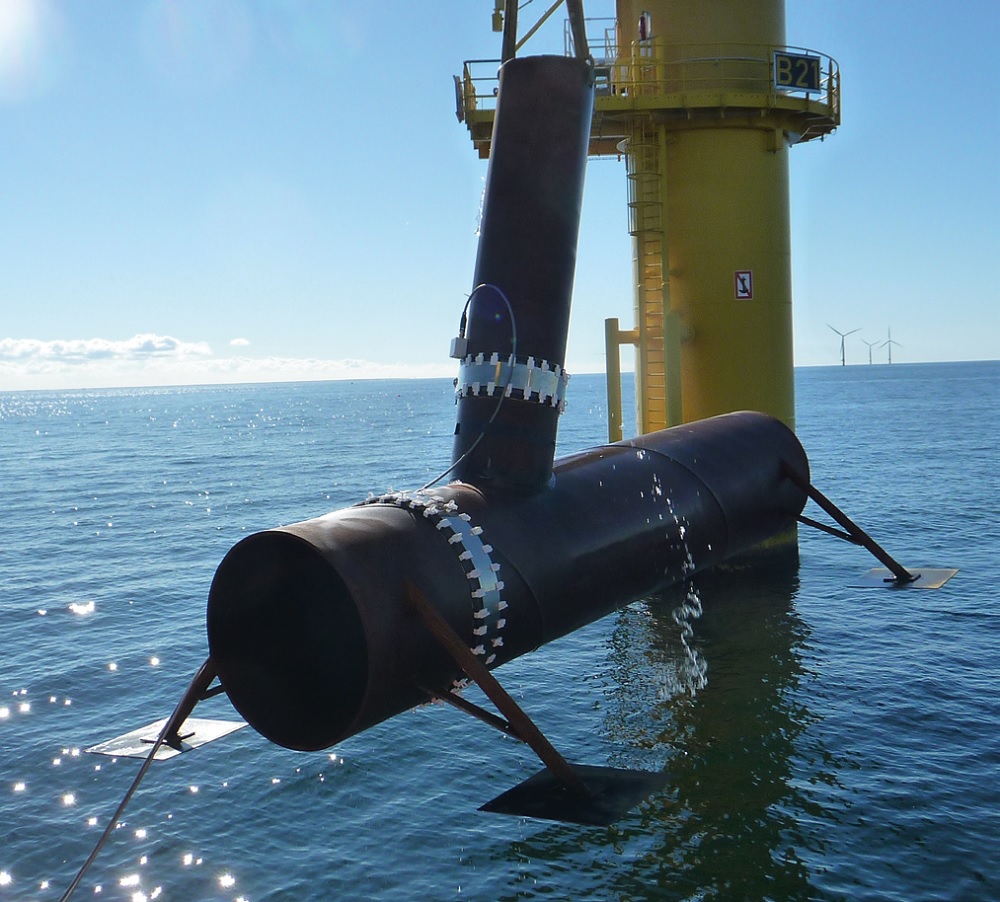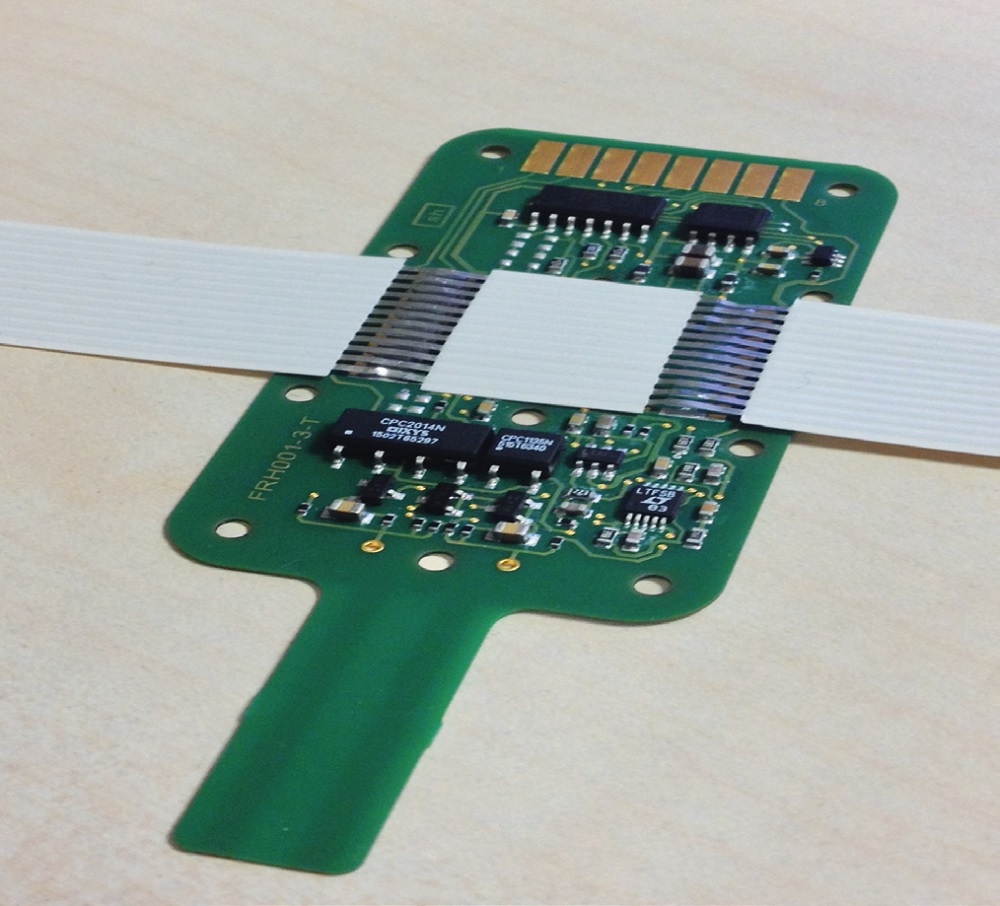

Even novel sensors work in conjunction with measurement and signal-evaluating electronics. Research at Fraunhofer IKTS is focused on developing sensor systems based on ultrasonic guided waves for structural health monitoring (SHM). These SHM systems are used on safety-relevant structures of machines located in harsh environments. An example is a sensor ring system for underwater inspection of weld seams on steel-based foundation structures located in the ocean.
Design of sensor systems with robust handling, long-term functionality, and reliability is a prerequisite for customer acceptance and cost efficiency. Within the scope of the current “Sensormanschette“ project, solutions were found for an SHM system for use at a depth of 20–40 m below the water surface and with a service life of 10 years. Hermetic encapsulation in water and diverse liquids, pressure resistance of electronics, shape adaptation on curved steel surfaces, and robust handling by deep sea divers were realized. In general, the functional targets of very low ultrasonic signal losses had to be kept sight of in every work step. The inner design of the sensor nodes and the selection of the packaging materials were critical aspects.
The encapsulation design was based on significantly enlarged diffusion paths for liquid molecules and use of materials of very low hygroscopicity. Additionally, three barrier levels were integrated for protection from infiltrating moisture: a cover foil (polymer carrier with multiple inorganic layers), an embedding material for the sensor nodes (thermoplastic), and an encapsulation material for the electronics (epoxy-ceramic composite or liquid-resistant polyurethane). Avoidance of interdiffusion pathways for liquid media, even under mechanical force and bending conditions, was crucial. Micromechanical investigation of resistance to crack initiation under bending was performed. Care was also taken to avoid air inclusions and voids in the embedding materials because of their potential to form diffusion pathways. Underfill materials were applied under the electronic components to avoid air gap creation and thus prevent spontaneous cracking under high-pressure loading in underwater conditions. Piezoceramic sensor elements to generate ultrasonic waves were successfully embedded in the electronic substrate, thereby generating cost advantages over isolated external piezoelectric patches, reducing the number of critical electromechanical contacts, and contributing to greater system reliability. The final packaged solution was then tested in pressure chambers and released for testing at the underwater location.